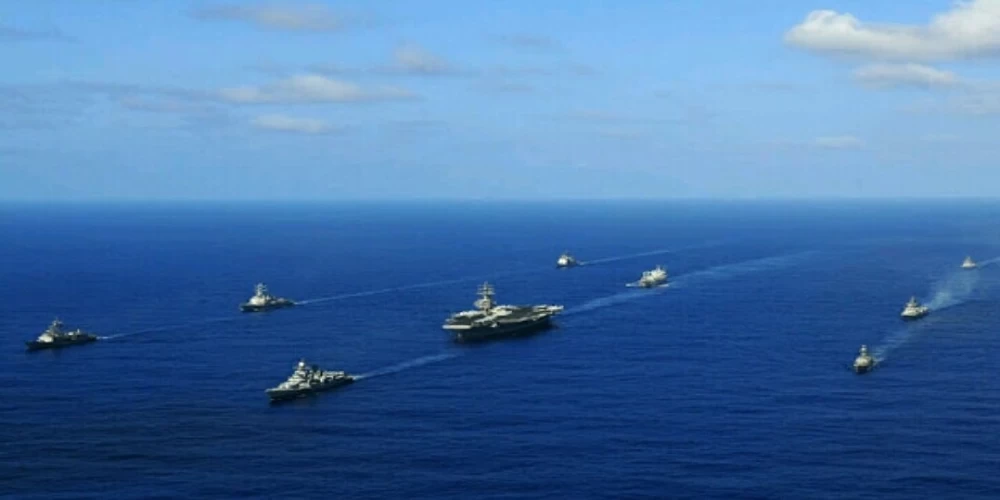
New Delhi: The Indo-Pacific region is witnessing a significant escalation in military tensions, particularly between Australia and China. Recent events have highlighted the growing naval presence of China in the region, prompting Australia to bolster its defense capabilities with anti-ship missiles and advanced targeting radars. This strategic shift is part of a broader response to China's expanding military influence and assertive naval activities. The move underscores Australia's growing concerns about China's expanding military influence and its potential threat to regional security. With significant investments in missile defense, Australia aims to protect its vast maritime approaches and support regional stability amidst rising tensions.
According to a news article published www.cbsnews.com on 19 March 2025, China has been undergoing an unprecedented military expansion, often compared to the largest since World War II. This buildup includes a significant increase in naval capabilities, with Chinese warships increasingly operating in southern waters, signaling a more aggressive stance towards regional security. The People's Liberation Army Navy (PLAN) has been conducting live-fire drills near Australian waters, raising concerns about China's power projection in the region.
According to the Reuters on 13 March 2025, In response to these developments, Australia is rapidly arming itself with anti-ship missiles. The decision follows the deployment of Chinese warships close to major Australian cities like Sydney and Melbourne, which raised alarms throughout Australia's defense community. The Australian military plans to equip soldiers with advanced anti-ship missiles and targeting radars to protect its vast maritime approaches.
Two types of advanced anti-ship missiles are under evaluation for the Australian army: the Naval Strike Missile developed by Norway's Kongsberg Defence & Aerospace and Lockheed Martin's Precision Strike Missile. Future versions of the Precision Strike Missile are expected to have a range of up to 1,000 km and can be fired from High Mobility Artillery Rocket System (HIMARS) launchers. Australia has ordered 42 HIMARS launchers from the United States, with delivery expected between 2026 and 2027.
According to a news article published stratnewsglobal.com on 13 March 2025 This military buildup marks one of the biggest shifts in Australia's defense strategy in decades. The Australian government has announced a massive AUD$74 ($47 billion) investment in missile defense and strike capabilities over the next decade. This investment is not only aimed at countering the Chinese threat but also at supporting allied forces in defending strategically important islands in the Asia-Pacific region.
The situation is not isolated to Australia and China; it involves broader regional dynamics. The United States and other key allies in Asia, such as Japan, South Korea, Taiwan, and the Philippines, are also modernizing and expanding their missile forces in response to China's military expansion. This collective response underscores the strategic uncertainty faced by these nations and their efforts to maintain regional stability.
The escalating tensions pose significant risks to regional stability and economic relationships. The South China Sea and broader Pacific are crucial for global trade routes, and any disruption could have far-reaching consequences for international commerce. The situation is drawing parallels with the Cold War era, with some analysts suggesting the emergence of a new Cold War in the Indo-Pacific region.
China views its military activities as part of a "defensive national defense policy" and argues that it should not be used as an excuse to exaggerate tensions or incite arms races. However, the lack of official notification for military exercises and the proximity of these exercises to Australian waters have been seen as provocative by Australian officials.
Australia's decision to arm its military with anti-ship missiles reflects the country's growing concerns about China's military expansion and regional influence. This strategic move is part of a broader regional response to China's assertive naval activities, involving significant investments in defense capabilities and alliances with other nations. As tensions continue to rise, the Indo-Pacific region faces its most challenging security environment in decades, with implications for both regional stability and global economic trade routes.
BI Bureau









 (13)_500_x_400.webp)


